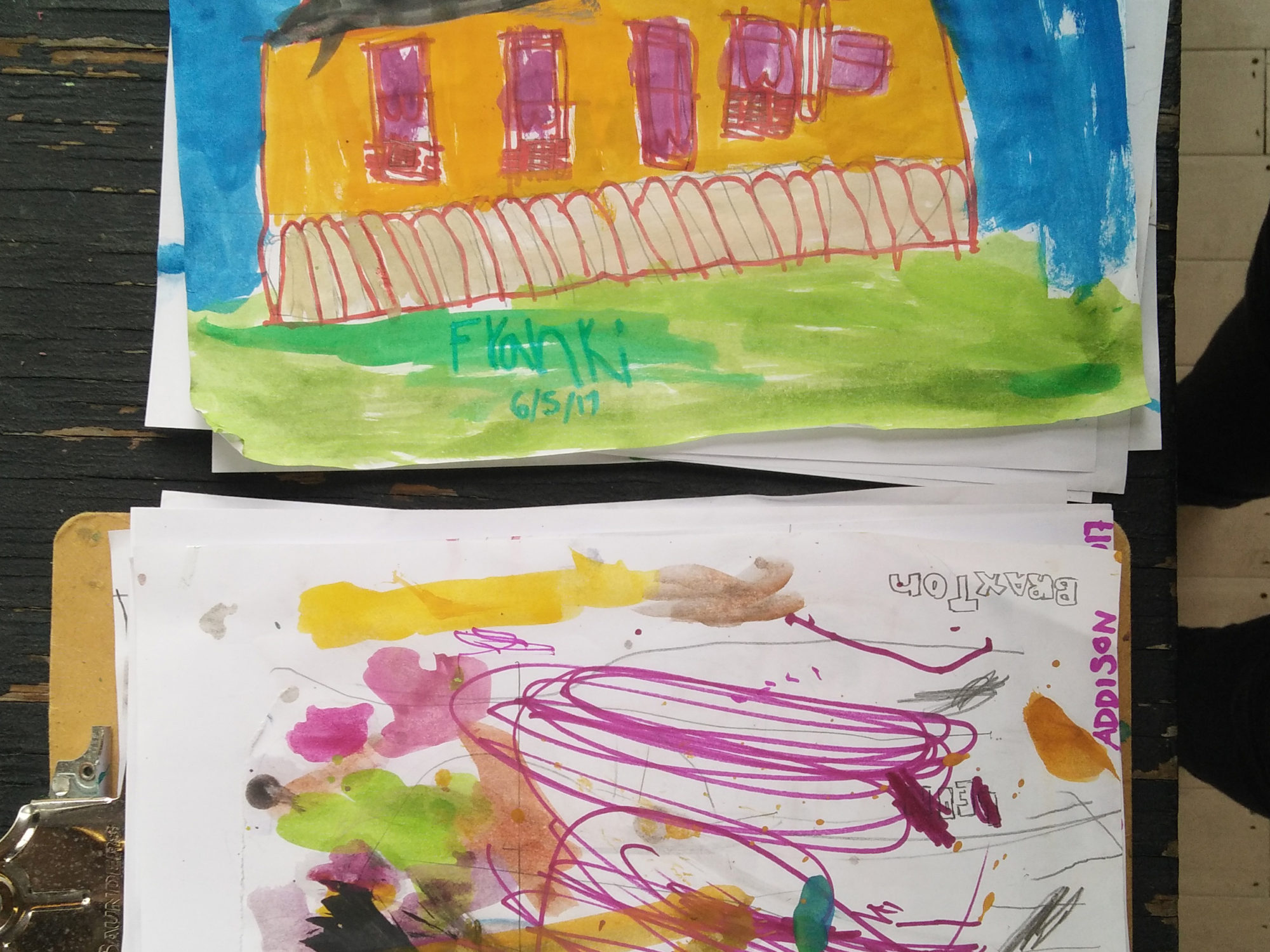Changemaker Catalyst Award recipient Annika Schneider spent her summer working at PlayBuild NOLA in order to learn about how design education can be used to teach children about the ways in which they can analyze and positively impact their neighborhoods. Annika is getting her Masters in Architecture with a minor in urban studies.
Think Like an 6-Year Old

Thinking like an 6-year old is one of the many lessons I learned from working with PlayBuild. As a nonprofit focused on teaching children about the professions of architecture, engineering and urban planning, in order to give them control of their environments, PlayBuild wants the children to think as early stage professionals. In order for me to help the children do that, I had to break down my past 4 years of architectural education and see the built world in a simpler form. The thoughts of fascia boards, gutters, and shingles I see in a roof were replaced with basic activities that could identify the roof’s shape. I had to ask myself questions like, what shapes are the building made of and what shapes are the windows?
While the ideas of urban planning, engineering and architecture may not seem so foreign on a university campus, these are not concepts that children give much thought to. Growing up in an underserved neighborhood, lacking a space for children to play and other neighborhood necessities, it becomes vital to introduce children to their ability to change their communities.

With the Changemaker Catalyst Award, I was able to spend a day a week, working with children, organizers and volunteers to spread the PlayBuild message. I worked with two different summer camps, the Breakfast Builders, a free two-week PlayBuild camp, and the Youth Empowerment Program camp, and on some weekends I met even more kids at city wide festivals where PlayBuild was tabling. One thing I quickly learned was that if you give children creative freedom, they will never do exactly what you expect, but as their creative skills develop, their work becomes a way to see through their eyes. As they built towers and other imaginative structures, they would explain what they were seeing – an underground rocket garage or a tall shoe factory. While the underground rocket garage was flat and expansive with magna tiles that could be moved for the rocket ship entrance, the shoe factory became as tall as the children building it and areas for both making shoes and showcasing them. With every structure they built, they would learn what works best in that situation and began to examine what they would do differently next time or with more blocks.
What developed within the summer camp, was a four-way collaboration, between the instructor, Diondra Reinhart, the engineering student/camp counselor, Leon, the campers and me, the “architectural designer in residence.” In order to create more architectural curriculum, I worked with Diondra and the children in order to learn on how they best respond to the activities. Diondra brought the knowledge of how to communicate with children and how to inspire them to create.
Chalk about Change
The focus of the camps was to develop the kids’ sense of design both personally and within the community. In the camps they would be asked, “What is a community,” “What goes in a community,” and “Who is part of a community?”


A very memorable experience for me was taking a group of kids visiting from the Y.E.P. to the Martin Luther King Jr. Boulevard. We walked around the neutral ground and asked the children to look at the street, the neighborhood and the neutral ground itself. With chalk, we then asked them to draw what they think would improve the area. The kids were very thoughtful with their answers, considering both the homeless population and what was lacking. After only 10 minutes the neutral ground was covered in pictures of flowers, playgrounds, and fruit trees and small homes with the key in the mailbox for the homeless.
With this type of thinking, that will hopefully only grow over time, these PlayBuild participants are reimagining the spaces around them. By giving them the tools and the prompts to look around themselves with the knowledge that their surroundings can be changed, they will change it.
